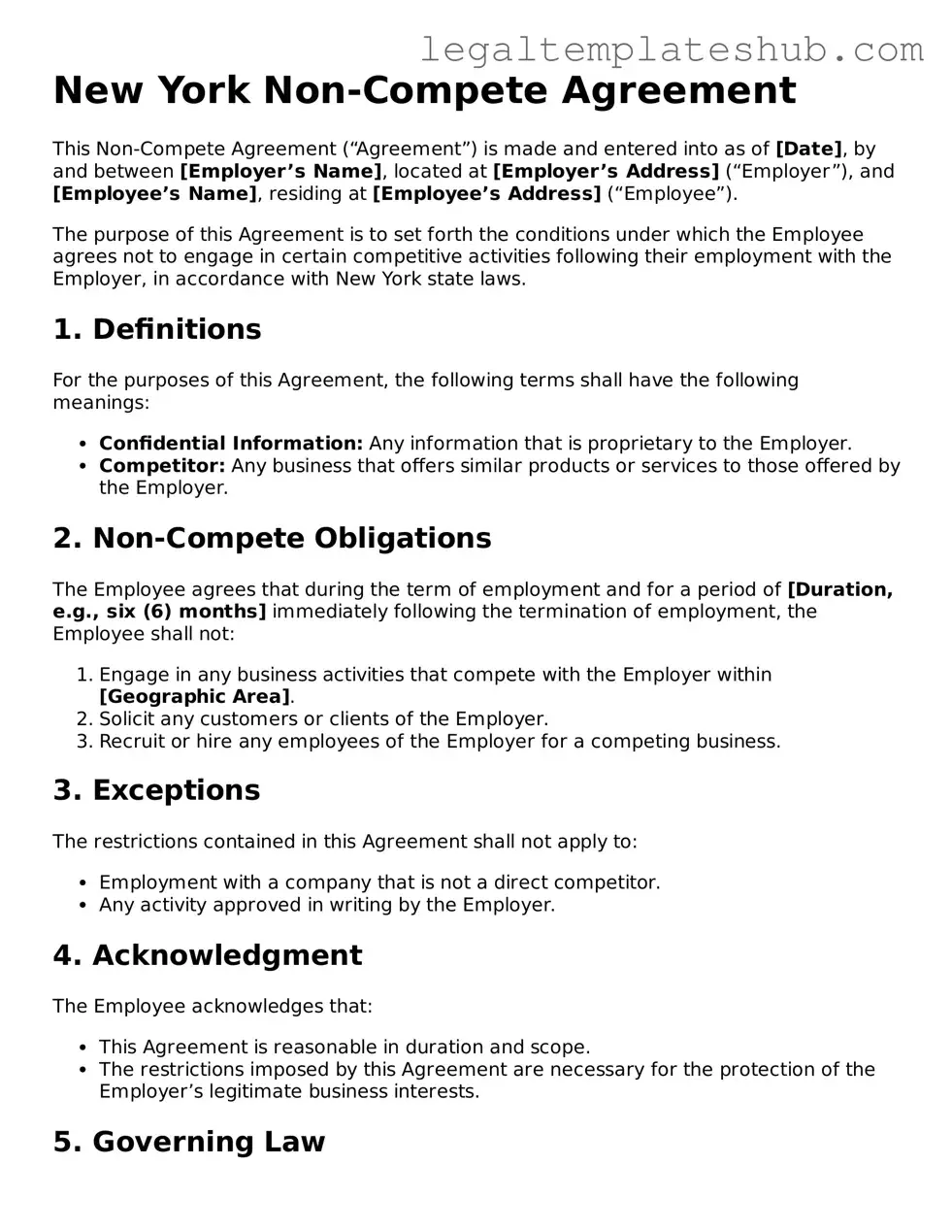Printable Non-compete Agreement Document for New York
A New York Non-compete Agreement is a legal document that restricts an employee from working for competitors or starting a similar business for a specified period after leaving their current employer. This agreement aims to protect a company’s trade secrets and competitive advantage. Understanding its implications is crucial for both employers and employees navigating the job market in New York.
To ensure you have the correct documentation, consider filling out the form by clicking the button below.
Access Editor
